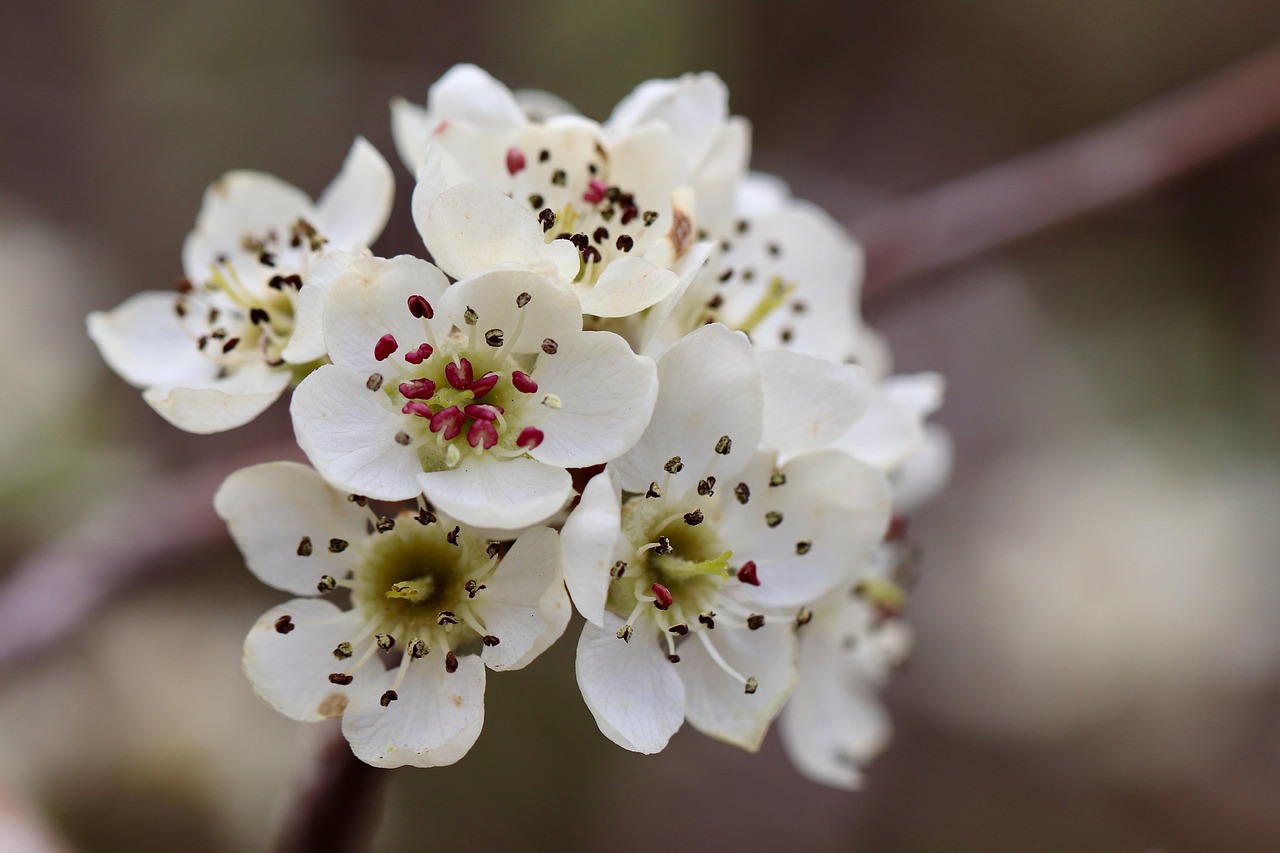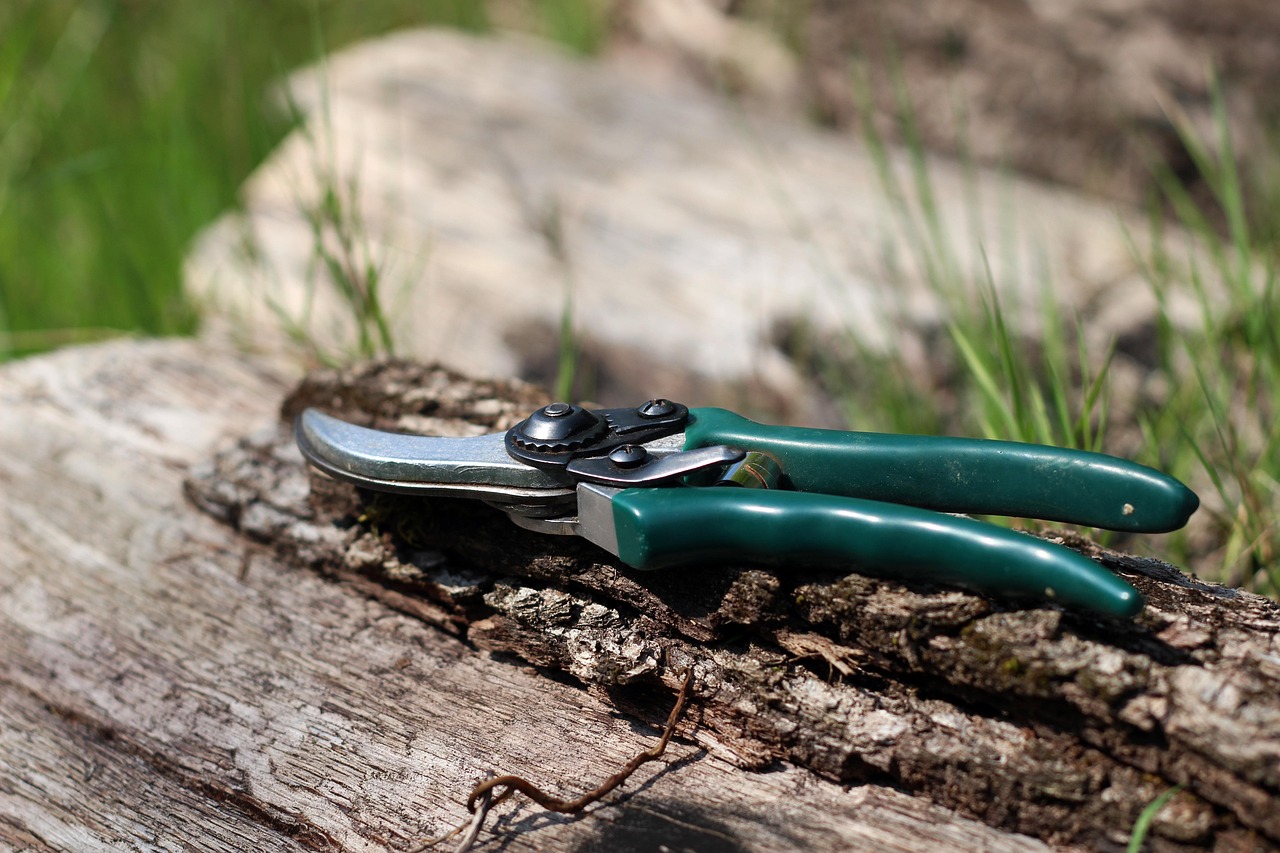Pruning snow pear trees is essential for shaping unique landscapes. This process enhances their natural beauty, promotes healthy growth, and maximizes fruit production. Proper pruning techniques can transform these trees into stunning focal points in gardens and parks.
The snow pear tree, known scientifically as Pyrus calleryana ‘Chanticleer’, is celebrated for its stunning white blossoms in spring and vibrant foliage in fall. These trees can be a striking addition to any landscape, providing shade, beauty, and even fruit. However, maintaining their aesthetic appeal and health requires regular pruning.

Pruning is not just about cutting branches; it is an art that shapes the tree’s growth and form. The right techniques can lead to enhanced air circulation, reduced disease susceptibility, and improved sunlight penetration. Understanding when and how to prune a snow pear tree is crucial for achieving a well-balanced and visually appealing landscape.
Understanding Snow Pear Trees
Snow pear trees are relatively easy to grow and care for, making them a popular choice among homeowners and landscapers alike. They thrive in a variety of soil types and can adapt to different climates. Here are some key characteristics of snow pear trees:
| Characteristic | Description |
|---|---|
| Height | Typically grows 30 to 40 feet tall. |
| Spread | Can spread up to 20 feet wide. |
| Flowering | Produces white flowers in early spring. |
| Foliage | Leaves turn vibrant shades of red and orange in fall. |
| Fruit | Produces small, inedible pears. |
Their dense canopy offers excellent shade, making them ideal for residential gardens and public parks. However, if left unpruned, these trees can become overgrown, leading to a crowded appearance and reduced fruit quality. Regular pruning helps maintain a clean and structured look while ensuring the tree remains healthy.

When to Prune Snow Pear Trees
Timing is critical when it comes to pruning snow pear trees. The best time to prune is during the late winter or early spring when the tree is still dormant but before new growth begins. This timing minimizes stress on the tree and allows it to heal quickly once the growing season starts.
- Late winter (February to March) is ideal for major pruning tasks.
- Avoid pruning in late summer or fall, as this can stimulate new growth that may not harden off before winter.
- If necessary, light pruning can be done in the summer to remove any unwanted growth or dead branches.
Understanding the seasonal growth patterns of snow pear trees is essential. During dormancy, the tree can better tolerate cutting without the risk of sap bleeding or stress that can occur when pruning during active growth periods.
Essential Pruning Techniques
There are several techniques to consider when pruning snow pear trees. Each method serves a specific purpose in enhancing the tree’s structure and appearance:

Crown Thinning
Crown thinning involves selectively removing branches from the interior of the tree’s canopy. This technique improves air circulation and light penetration, which helps reduce disease risks and promotes healthy growth.
Crown Raising
Crown raising is the process of removing lower branches to elevate the tree’s crown. This technique creates more space below the tree for walking or planting other plants while allowing more light to reach the ground.
Crown Reduction
Crown reduction involves shortening the length of branches to decrease the overall height of the tree. This technique is essential for controlling the size of the tree and maintaining its shape without compromising its natural form.

Deadwooding
Deadwooding refers to removing dead or diseased branches from the tree. This practice not only enhances the aesthetic appeal but also prevents pests and diseases from spreading throughout the tree.
Each pruning technique should be applied thoughtfully to ensure the best results. By understanding these methods, gardeners can create unique landscapes that highlight the beauty of snow pear trees while ensuring their health and longevity.
Tools Needed for Pruning Snow Pear Trees
Having the right tools is essential for effective pruning of snow pear trees. Using appropriate equipment ensures clean cuts, which help the tree heal better and reduce the risk of disease. Here are some recommended tools:
- Hand Pruners: Ideal for small branches and detailed cuts.
- Loppers: Useful for cutting larger branches that are beyond the reach of hand pruners.
- Saw: A pruning saw is necessary for removing thicker branches.
- Gloves: Protect your hands while working with thorny or rough branches.
- Safety Goggles: Wear goggles to shield your eyes from falling debris.
Each tool serves a specific purpose. It is vital to keep them sharp and clean to ensure efficient and safe pruning. Regular maintenance of tools will result in better performance and longevity.
Common Mistakes to Avoid When Pruning
Pruning can be a straightforward task if done correctly. However, several common mistakes can lead to undesirable results. Avoiding these pitfalls is crucial for maintaining the health and aesthetics of snow pear trees:
- Pruning at the Wrong Time: As mentioned earlier, pruning at the wrong time can stress the tree. Always aim for late winter or early spring.
- Over-Pruning: Removing too many branches can weaken the tree and reduce its ability to produce flowers and fruit.
- Ignoring Tree Structure: Cutting without consideration for the tree’s natural form can lead to an unattractive appearance.
- Using Dull Tools: Dull tools cause ragged cuts, leading to improper healing.
- Neglecting Safety: Always prioritize safety by wearing appropriate gear and ensuring a secure ladder when working at heights.
Avoiding these common mistakes will help ensure successful pruning practices. Knowledge of proper techniques and timing is essential in fostering healthy growth for your snow pear trees.
Benefits of Pruning Snow Pear Trees
The benefits of pruning snow pear trees extend beyond aesthetics. Proper pruning techniques contribute to healthier trees and a more vibrant landscape. Some key benefits include:
- Improved Air Circulation: Thinning the canopy allows air to flow, reducing moisture levels that can lead to fungal diseases.
- Better Sunlight Penetration: Ensuring that light reaches all parts of the tree encourages even growth.
- Enhanced Fruit Production: Pruning can stimulate new growth that produces more flowers and subsequently more fruit.
- Aesthetic Appeal: Regularly pruned trees maintain an attractive shape, enhancing the overall landscape design.
- Increased Longevity: Healthy trees are more resilient against pests and diseases, leading to a longer lifespan.
By understanding these benefits, gardeners can appreciate the importance of incorporating regular pruning into their tree care routines. A well-maintained snow pear tree is sure to be a stunning focal point in any landscape.
Seasonal Care After Pruning
Caring for snow pear trees after pruning is just as important as the pruning process itself. Proper post-pruning care promotes recovery and prepares the tree for future growth. Here are some essential steps:
Watering
After pruning, it is essential to provide adequate water to the tree. This helps support new growth and recovery from cuts. Here are some watering tips:
- Water thoroughly after pruning to ensure deep soil moisture.
- Avoid overwatering, as this can lead to root rot.
- Monitor soil moisture levels regularly, especially during dry spells.
Fertilizing
Fertilizing after pruning can give trees an extra boost. However, it should be done carefully:
- Use a balanced fertilizer with equal parts nitrogen, phosphorus, and potassium.
- Avoid fertilizing immediately after pruning; wait a few weeks to allow the tree to adjust.
- Follow manufacturer instructions regarding application rates and timing.
Pest Control
Post-pruning is an excellent time to assess for pests or diseases that may affect snow pear trees. Keep an eye out for signs of infestation or disease:
- Inspect leaves and branches regularly for unusual spots or pests.
- If pests are found, consider using organic insecticidal soaps or neem oil as treatments.
- Maintain a healthy environment around the tree, removing debris that may harbor pests.
Implementing these seasonal care tips will help ensure that snow pear trees recover well from pruning. This care supports their overall health and enhances their contribution to unique landscapes.
Innovative Landscape Design with Snow Pear Trees
Snow pear trees can significantly enhance landscape designs, offering both aesthetic beauty and functional benefits. Incorporating these trees into various landscape styles adds value and visual interest. Here are several innovative ways to use snow pear trees in landscape design:
Focal Points in Gardens
Snow pear trees make stunning focal points in gardens. Their tall stature and vibrant seasonal changes create a striking visual appeal. When placed strategically, they can draw the eye and create balance within the landscape. Here are some design tips:
- Planting Location: Position the trees where they can be viewed from multiple angles, such as near walkways or patios.
- Companion Planting: Pair snow pear trees with lower shrubs or perennial flowers to create a layered effect.
- Seasonal Interest: Consider the seasonal changes of the tree, including its flowering and fall colors, when designing your layout.
Creating Privacy Screens
Snow pear trees can also serve as effective privacy screens. When planted in rows, their dense foliage provides a natural barrier against noise and visual distractions. This technique is useful for:
- Property Boundaries: Use snow pear trees along property lines to create a natural fence.
- Outdoor Living Spaces: Plant them around patios or decks to enhance privacy and create a more intimate atmosphere.
- Windbreaks: Position them strategically to reduce wind exposure in open areas.
Enhancing Walkways and Pathways
Adding snow pear trees along walkways or pathways can enhance the journey through the landscape. Their beautiful blooms and foliage create an inviting atmosphere. Consider these ideas:
- Tree-Lined Paths: Plant trees on either side of a pathway for a dramatic effect.
- Canopy Effect: Prune the lower branches to create an archway effect as visitors walk through.
- Seasonal Displays: Combine with seasonal flowers or ornamental grasses to complement the tree’s natural beauty.
The Role of Snow Pear Trees in Sustainable Landscaping
Sustainable landscaping focuses on environmentally friendly practices that conserve resources and promote biodiversity. Snow pear trees contribute to these efforts in several ways:
Soil Health Improvement
Snow pear trees can enhance soil health through their root systems, which help prevent erosion and improve soil structure. Here are some benefits:
- Root Structure: Their roots stabilize the soil, reducing runoff during heavy rains.
- Nutrient Cycling: Falling leaves decompose and enrich the soil with organic matter.
- Diversity Support: They can provide habitat for beneficial insects and other wildlife.
Water Conservation
Integrating snow pear trees into landscapes can support water conservation efforts by reducing the need for irrigation. Here’s how:
- Drought Resistance: Once established, snow pear trees are relatively drought-tolerant, requiring less water than many other plants.
- Shade Provision: Their canopy provides shade, reducing evaporation rates in surrounding soil.
- Soil Moisture Retention: The tree’s root system helps retain moisture in the soil, benefiting nearby plants.
Pest Management Strategies for Snow Pear Trees
Pest management is essential for maintaining healthy snow pear trees. Integrated pest management (IPM) strategies focus on prevention and control of pests without relying solely on chemicals. Here are some effective strategies:
Cultural Practices
Cultural practices can help minimize pest problems. These include:
- Proper Spacing: Ensure adequate spacing between trees to promote air circulation and reduce disease risk.
- Diverse Planting: Surround snow pear trees with a variety of plants to encourage beneficial insects and deter pests.
- Regular Monitoring: Inspect trees frequently for early signs of pests or disease.
Biological Controls
Utilizing natural predators is an effective method for controlling pests:
- Lacewings and Ladybugs: These insects feed on aphids and other common pests that may affect snow pear trees.
- Nematodes: Beneficial nematodes can help control soil-borne pests.
- Bacterial Insecticides: Products like Bacillus thuringiensis (Bt) target specific pests while being safe for beneficial insects.
Chemical Controls
If pest populations exceed acceptable levels, chemical controls may be necessary. However, they should be used judiciously:
- Selective Pesticides: Use pesticides that target specific pests without harming beneficial organisms.
- Application Timing: Apply chemicals during periods when beneficial insects are less likely to be affected, such as early morning or late evening.
- Follow Guidelines: Always adhere to manufacturer guidelines for safe application and dosage.
Implementing these pest management strategies will help maintain healthy snow pear trees while minimizing environmental impact. By combining innovative landscaping techniques with sustainable practices, gardeners can enhance their outdoor spaces while promoting biodiversity and ecological balance.
Pruning Techniques for Enhanced Aesthetics
In addition to health and productivity, pruning snow pear trees can significantly enhance their aesthetic value. Different pruning techniques can be employed to achieve various visual effects, making the trees a stunning centerpiece in any landscape.
Artistic Shaping
Pruning can be used creatively to shape the tree according to the desired landscape style. Artistic shaping techniques include:
- Topiary: Creating sculpted shapes by carefully trimming and maintaining the tree’s foliage. This technique makes snow pear trees a unique visual element.
- Espalier: Training the tree to grow flat against a wall or fence, which can be both functional and decorative.
- Formal vs. Informal Shapes: Depending on the landscape design, snow pear trees can be pruned into formal shapes for a structured garden or left more natural for a relaxed, informal look.
Seasonal Pruning for Visual Impact
Seasonal pruning not only promotes tree health but also enhances visual appeal throughout the year. Here are some considerations:
- Spring Pruning: Focus on shaping the tree after flowering to maintain its form while allowing optimal blooming.
- Summer Pruning: Lightly prune during summer to remove excess growth and maintain shape without affecting blooming.
- Fall Pruning: Avoid heavy pruning in the fall, as this can stimulate new growth that may not survive winter.
Integrating Snow Pear Trees with Other Plant Species
Snow pear trees can be effectively integrated with other plant species to create diverse and vibrant landscapes. Companion planting not only enhances aesthetics but also promotes ecological health.
Choosing Complementary Plants
When selecting plants to pair with snow pear trees, consider species that thrive in similar conditions. Some compatible plants include:
- Ornamental Grasses: These can provide texture contrast and movement in the landscape.
- Perennials: Flowers like coneflowers, daylilies, and black-eyed Susans can bloom from spring through fall, providing continuous color.
- Shrubs: Low-growing shrubs can fill in gaps and create a layered effect around the base of the tree.
Diversity Benefits
Integrating a variety of plant species around snow pear trees offers numerous benefits:
- Biodiversity Support: A diverse plant community attracts a wider range of pollinators and beneficial insects.
- Pest Management: Companion plants can deter pests naturally, reducing reliance on chemical controls.
- Aesthetic Harmony: A carefully curated plant palette creates a visually appealing and cohesive landscape design.
Long-Term Care and Maintenance
The long-term success of snow pear trees in landscapes relies on ongoing care and maintenance. Here are key practices to ensure their health and beauty over time:
Regular Monitoring
Consistent observation of snow pear trees is crucial. Look for signs of stress, disease, or pest infestations. Regular monitoring allows for early intervention if problems arise.
Seasonal Mulching
Applying mulch around the base of the tree helps retain moisture, suppress weeds, and improve soil quality as it breaks down. Use organic mulch materials like bark or wood chips for best results.
Watering Practices
Sustaining proper watering practices is essential for tree health. Adjust watering schedules based on seasonal rainfall and temperatures to keep the soil adequately moist but not waterlogged.
Conclusion
Snow pear trees offer remarkable potential for creating unique landscapes through thoughtful pruning and care. Their striking beauty, combined with practical landscaping benefits, makes them an ideal choice for gardens and public spaces alike. By employing effective pruning techniques, integrating them with diverse plant species, and ensuring proper long-term care, gardeners can transform these trees into stunning focal points that enhance both aesthetic appeal and ecological balance.
The journey of cultivating snow pear trees is not just about maintaining their health; it is about fostering an environment that celebrates nature’s beauty while promoting sustainability. With proper knowledge and practices, snow pear trees can flourish, adding charm and character to any landscape for years to come.
